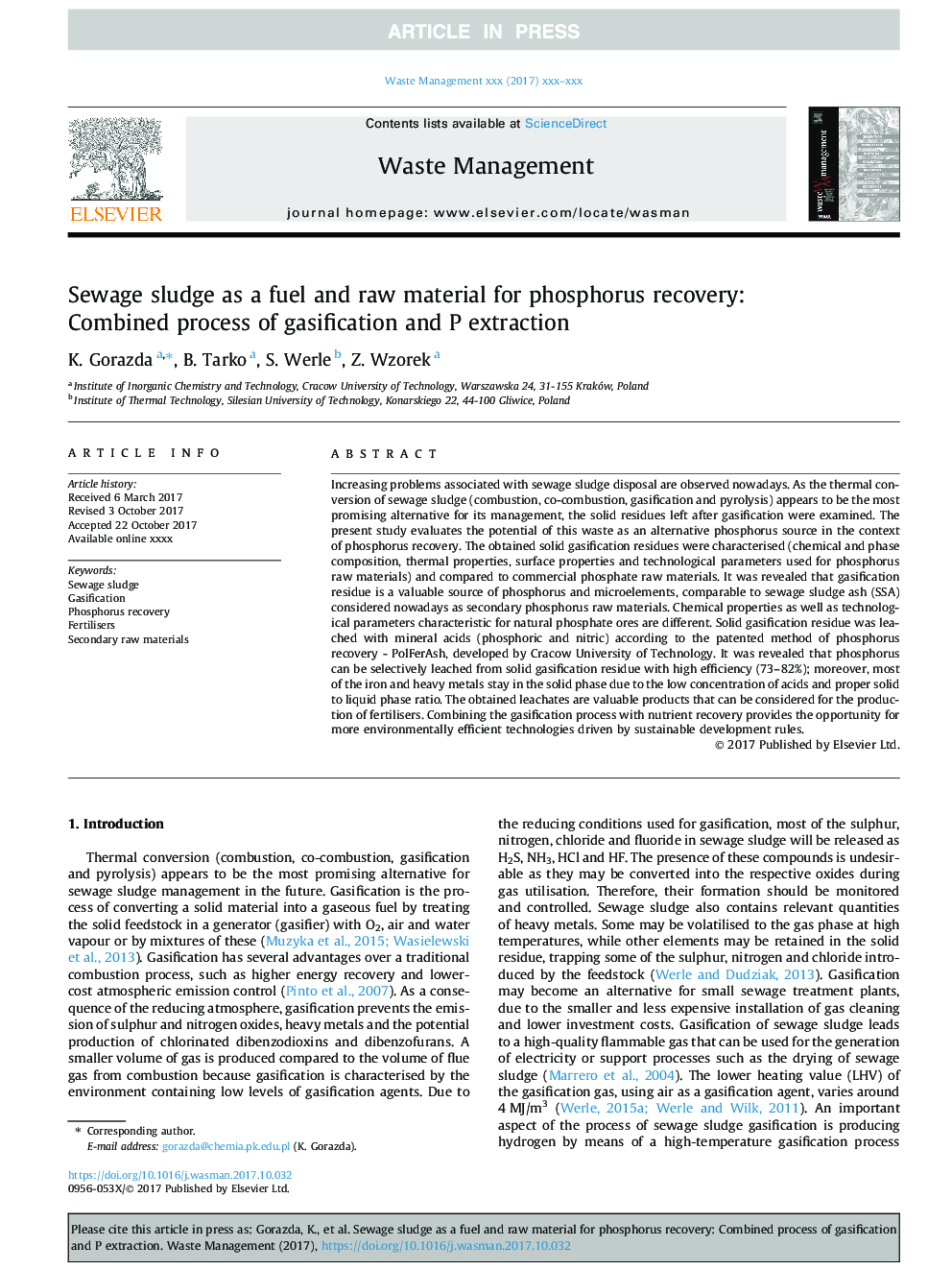| Article ID | Journal | Published Year | Pages | File Type |
|---|---|---|---|---|
| 8869986 | Waste Management | 2018 | 12 Pages |
Abstract
Increasing problems associated with sewage sludge disposal are observed nowadays. As the thermal conversion of sewage sludge (combustion, co-combustion, gasification and pyrolysis) appears to be the most promising alternative for its management, the solid residues left after gasification were examined. The present study evaluates the potential of this waste as an alternative phosphorus source in the context of phosphorus recovery. The obtained solid gasification residues were characterised (chemical and phase composition, thermal properties, surface properties and technological parameters used for phosphorus raw materials) and compared to commercial phosphate raw materials. It was revealed that gasification residue is a valuable source of phosphorus and microelements, comparable to sewage sludge ash (SSA) considered nowadays as secondary phosphorus raw materials. Chemical properties as well as technological parameters characteristic for natural phosphate ores are different. Solid gasification residue was leached with mineral acids (phosphoric and nitric) according to the patented method of phosphorus recovery - PolFerAsh, developed by Cracow University of Technology. It was revealed that phosphorus can be selectively leached from solid gasification residue with high efficiency (73-82%); moreover, most of the iron and heavy metals stay in the solid phase due to the low concentration of acids and proper solid to liquid phase ratio. The obtained leachates are valuable products that can be considered for the production of fertilisers. Combining the gasification process with nutrient recovery provides the opportunity for more environmentally efficient technologies driven by sustainable development rules.
Related Topics
Physical Sciences and Engineering
Earth and Planetary Sciences
Geotechnical Engineering and Engineering Geology
Authors
K. Gorazda, B. Tarko, S. Werle, Z. Wzorek,
